Goudier Island: Penguins & History Collide in Antarctic Paradise
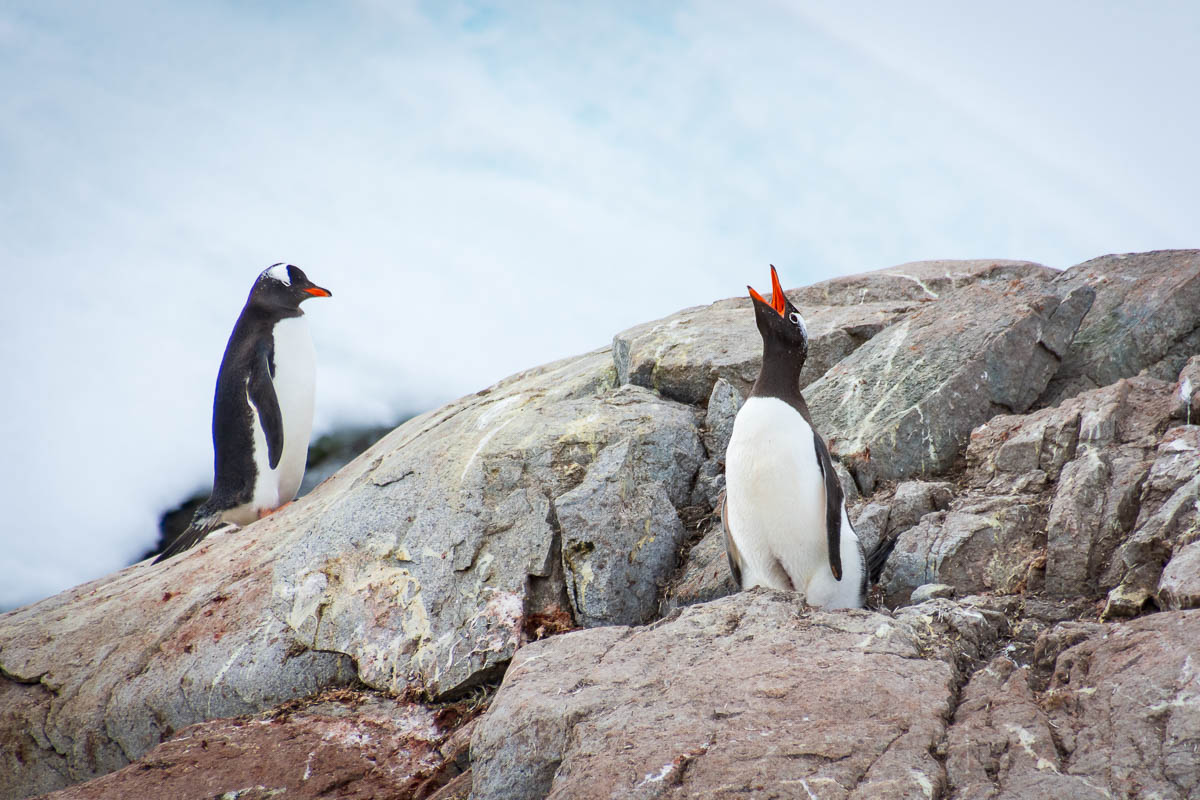
Goudier Island is a small, rocky outcrop located in the Antarctic Peninsula. It is a place of great historical significance and is home to a diverse range of wildlife, including a large penguin population. This blog post will explore the historical and geographical significance of Goudier Island, as well as its importance as a penguin habitat.
Historical significance and geographical location of Goudier Island
Goudier Island is situated in the South Shetland Islands, just off the coast of the Antarctic Peninsula. It was named after the French explorer Jean-Baptiste Charcot, who discovered the island in 1909. The island is relatively small, covering an area of just 50 hectares, and is characterized by its rugged terrain and rocky coastline.
The island has a rich historical past, with several buildings and relics from early Antarctic exploration still standing. One of the most iconic structures on Goudier Island is the historic British research station known as Port Lockroy. Built in 1944, this station served as a British base for scientific research and weather monitoring during World War II. Today, it is a museum and tourist attraction, providing visitors with a glimpse into the island's past.
The island's importance as a penguin habitat
Goudier Island is also an important breeding ground and habitat for several species of penguins, including Gentoo and Adelie penguins. These charismatic birds arrive on the island during the breeding season, which typically starts in late November and lasts until February. During this time, the penguins build nests, lay eggs, and raise their chicks.
The island's rocky terrain provides an ideal nesting site for penguins, as it offers protection from predators and ensures the safety of their eggs and chicks. The surrounding waters are rich in nutrients, providing an abundant food source for the penguins. This makes Goudier Island a thriving ecosystem and an essential habitat for these iconic Antarctic birds.
Goudier Island holds both historical and ecological significance. Its location and historical relics contribute to its historical importance, while its role as a penguin habitat highlights its ecological significance. Visiting Goudier Island offers a unique opportunity to learn about Antarctica's past and witness the incredible ecosystem that thrives on this remote island.
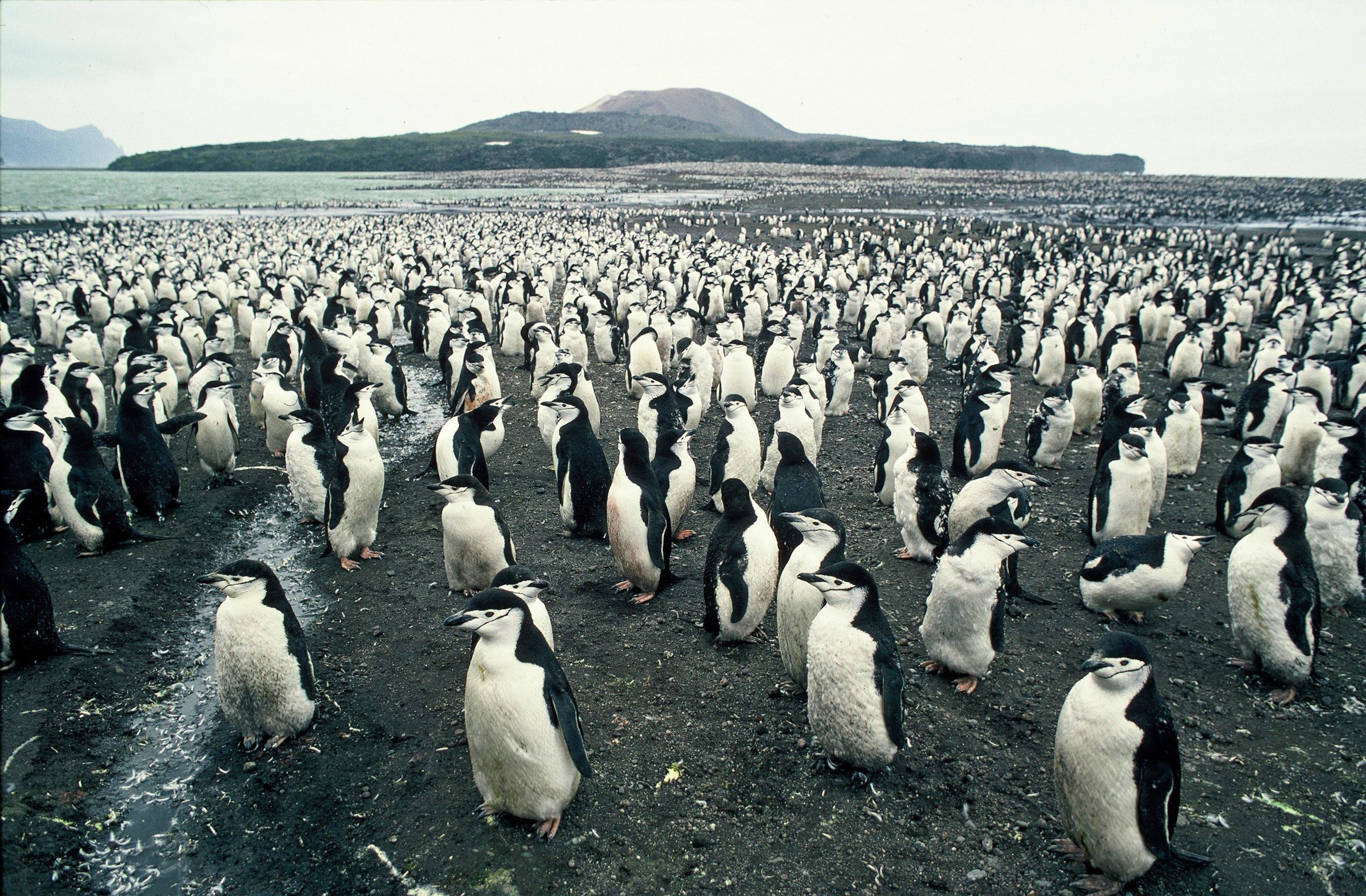
History of Goudier Island
Discovery and early explorations
Goudier Island was first discovered by the French explorer Jean-Baptiste Charcot in 1909 during his Antarctic Expedition. The island was named after Gustave-Adolphe Goudier, a crew member of Charcot's ship, the Pourquoi Pas. Charcot and his team were amazed by the rugged beauty of the island and its rocky coastline.
Over the years, Goudier Island became a popular stop for explorers and scientists alike. Its strategic location in the South Shetland Islands made it a convenient base for further exploration of the Antarctic Peninsula. Several notable expeditions, including those led by British, Norwegian, and American explorers, used Goudier Island as a stepping stone for their Antarctic adventures.
Scientific research and notable expeditions
During World War II, Goudier Island became home to a British research station known as Port Lockroy. The station was established in 1944 and served as a base for scientific research and weather monitoring. It played a crucial role in providing valuable data for climate studies and environmental research in the region.
Today, Port Lockroy has been restored to its original state and serves as a museum and tourist attraction. Visitors can explore the historic buildings and artefacts, gaining insights into the daily lives of the early Antarctic explorers. It is truly a fascinating experience that takes you back in time.
Goudier Island continues to be a vital site for scientific research, with various studies focusing on wildlife conservation, climate change, and ecosystem dynamics. The island's isolated location and pristine environment make it an ideal place to study the effects of human activities on the fragile Antarctic ecosystem.
So, whether you are a history enthusiast or a nature lover, Goudier Island offers a unique opportunity to uncover Antarctica's rich past and its ongoing scientific explorations. Plan your visit and immerse yourself in the captivating stories that this remote island has to offer!
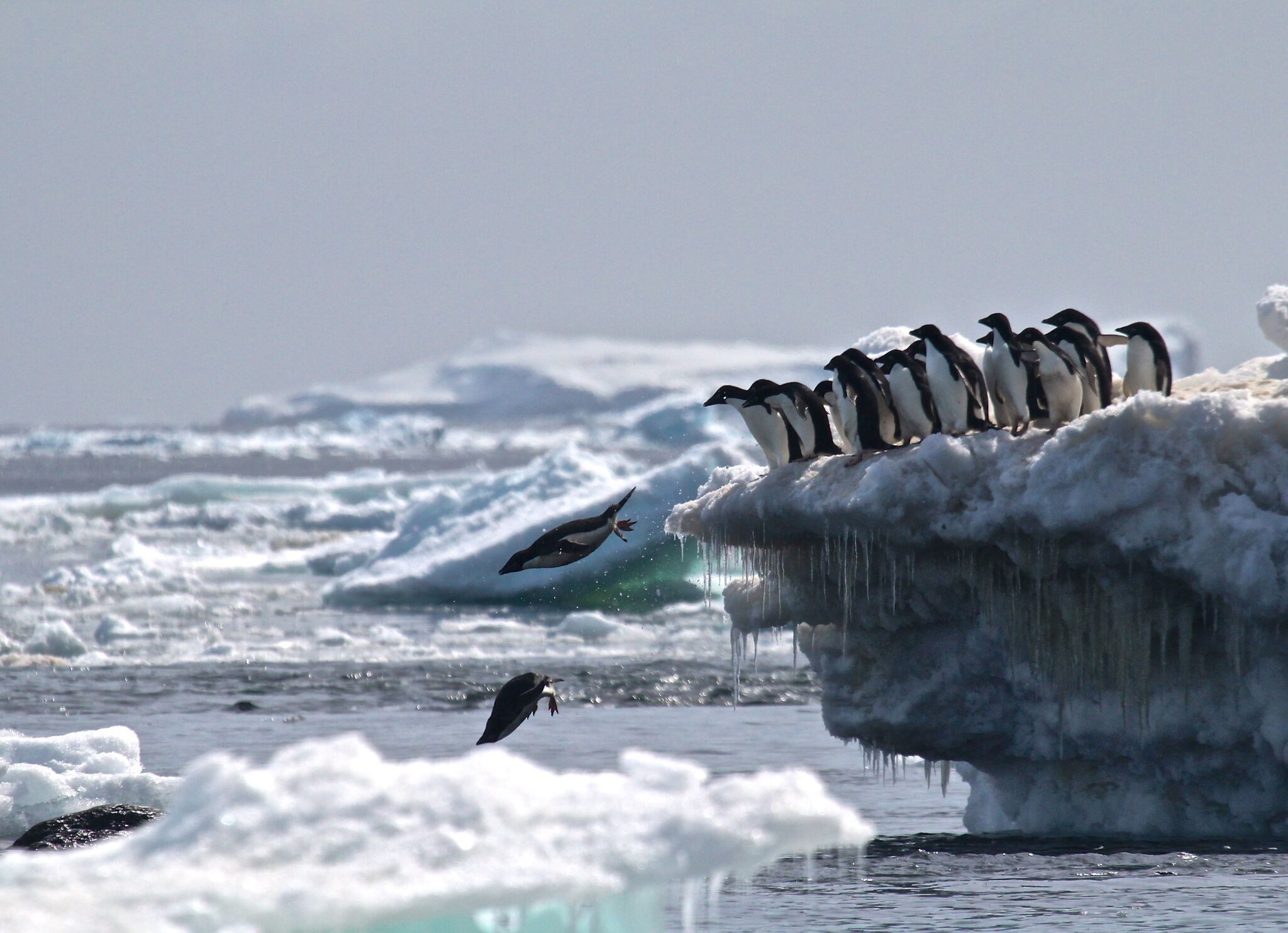
Penguin Species on Goudier Island
Overview of penguin species found on the island
Goudier Island is home to several species of penguins, making it a haven for penguin enthusiasts. The most common penguin species found on the island include:
- Gentoo penguins: These adorable penguins are known for their distinctive white-feathered "bonnets" and orange beaks. They are the largest penguin species on Goudier Island and can be seen waddling, swimming, and diving along the rocky coastline.
- Adélie penguins: With their classic tuxedo-like appearance, Adélie penguins are a sight to behold. They are known for their agility and can often be seen sliding down ice slopes. Adélie penguins are excellent swimmers and feed on krill and small fish.
- Chinstrap penguins: These penguins get their name from the thin black line that runs under their chin, resembling a strap. They are characterized by their short, pointed beaks and are known for their exceptional vocal abilities, which earned them the nickname "stonecracker penguins."
These penguin species are found in large colonies on Goudier Island, creating a spectacular spectacle for visitors to witness. You can observe their daily activities, such as nesting, feeding, and socializing, and even catch glimpses of adorable penguin chicks during breeding season.
Population and conservation efforts
The penguin population on Goudier Island is closely monitored by scientists and conservation organizations. The presence of research stations on the island provides an opportunity to study the population dynamics and the impact of climate change on these vulnerable species.
Conservation efforts focus on ensuring the protection of penguin habitats and raising awareness about the importance of preserving their natural environment. Visitors to Goudier Island are encouraged to follow responsible tourism practices, such as maintaining a safe distance from the penguins and respecting their nesting areas.
By supporting these conservation efforts, we can help safeguard the future of penguin populations on Goudier Island and contribute to the overall preservation of Antarctica's unique biodiversity.
So, whether you are a penguin lover or simply fascinated by the wonders of nature, Goudier Island offers a remarkable opportunity to witness these incredible creatures in their natural habitat. Plan your visit and be prepared to be captivated by the charm and beauty of Antarctic penguins!
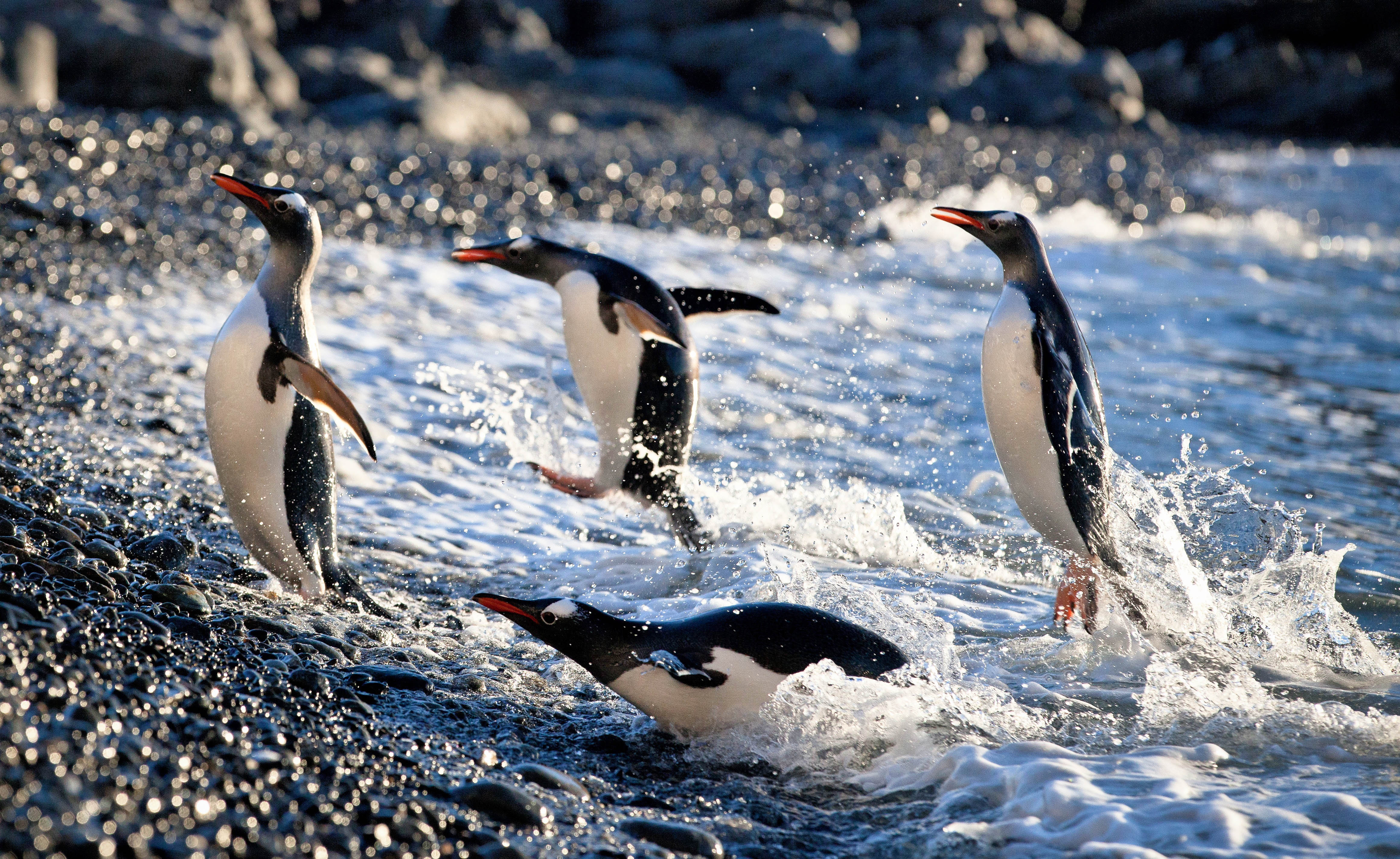
Wildlife and Biodiversity
Overview of penguin species found on the island
Goudier Island is truly a haven for wildlife enthusiasts, especially those who love penguins. The island is home to several species of penguins, each with their own unique characteristics and charm. The most common penguin species found on Goudier Island include:
- Gentoo penguins: These adorable penguins are known for their distinctive white-feathered "bonnets" and orange beaks. They are the largest penguin species on Goudier Island, and you can spot them waddling, swimming, and diving along the rocky coastline.
- Adélie penguins: With their classic tuxedo-like appearance, Adélie penguins are a sight to behold. They are known for their agility and their ability to slide down ice slopes. Adélie penguins are excellent swimmers and feed on krill and small fish.
- Chinstrap penguins: These penguins get their name from the thin black line that runs under their chin, resembling a strap. They have short, pointed beaks and are renowned for their exceptional vocal abilities, which earned them the nickname "stonecracker penguins."
These penguin species can be found in large colonies on Goudier Island, creating a spectacular sight for visitors. You can observe their daily activities, such as nesting, feeding, and socializing, and if you visit during the breeding season, you may even catch glimpses of adorable penguin chicks.
Other wildlife species found on Goudier Island
While penguins are the stars of Goudier Island, they are not the only wildlife species you can encounter here. The island is home to a variety of other fascinating creatures, including:
- Seals: Keep an eye out for Weddell seals and crabeater seals, which can often be seen resting on ice floes near the island.
- Birds: Goudier Island attracts a diverse range of bird species, including skuas, sheathbills, and Antarctic terns.
Unique flora and fauna
In addition to the wildlife, Goudier Island is also home to unique flora and fauna that have adapted to the harsh Antarctic environment. The island's rocky landscape is adorned with lichens and mosses, while Antarctic hair grass manages to grow in small patches of soil. These unique plants play an important role in the island's ecosystem.
The biodiversity on Goudier Island is truly remarkable, showcasing the incredible adaptability of life in Antarctica. As visitors to this pristine environment, it is important for us to respect and protect the delicate balance of nature that exists here.
So, whether you are a wildlife enthusiast or simply awestruck by the wonders of nature, Goudier Island offers an extraordinary opportunity to witness these incredible creatures in their natural habitat. Plan your visit and prepare to be captivated by the charm and beauty of Antarctic wildlife!
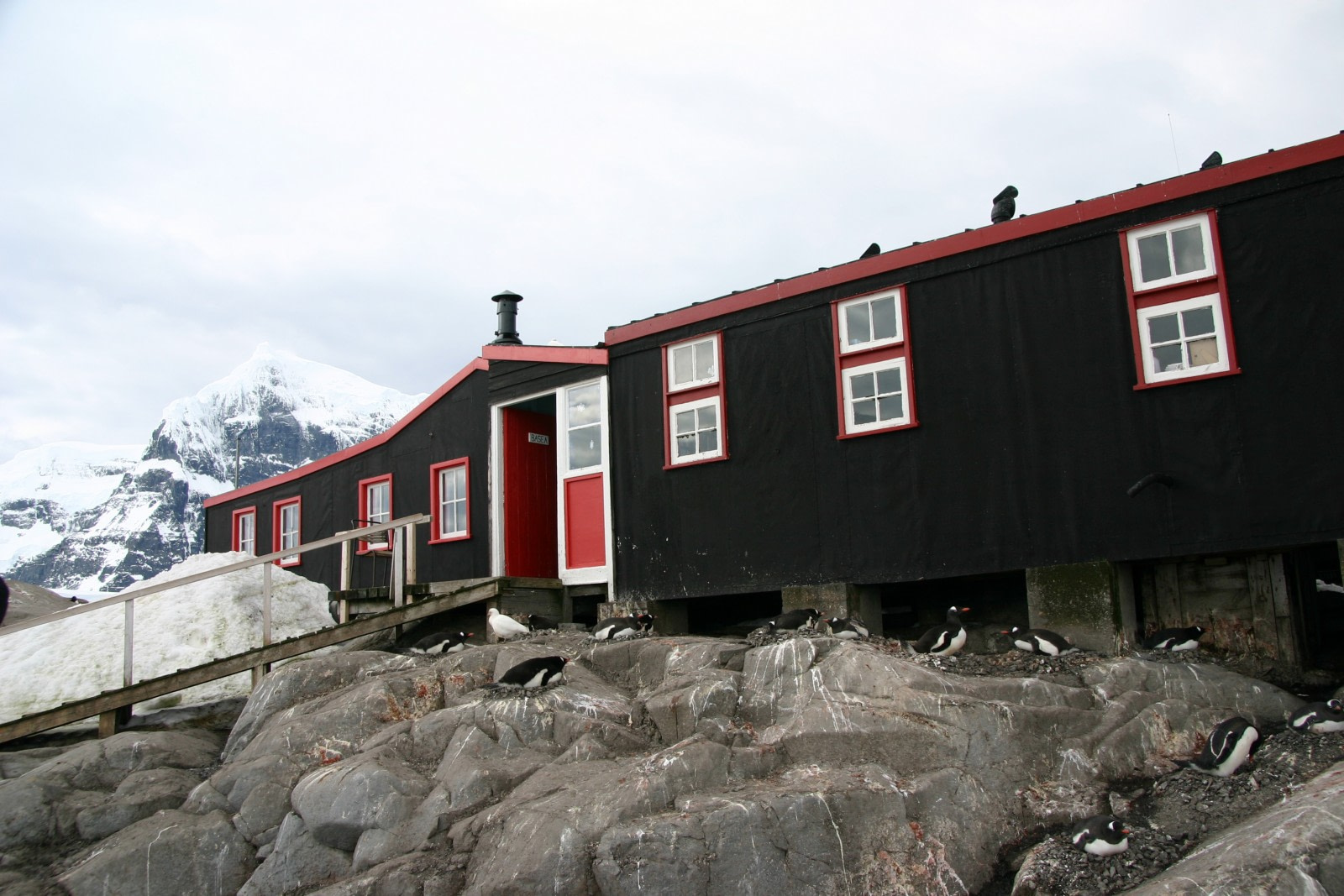
Research Stations on Goudier Island
Overview of the research stations and their contributions
Goudier Island is not only a haven for wildlife but also a hub for scientific research. Several research stations have been established on the island, each making significant contributions to our understanding of Antarctica and its unique ecosystem.
| Research Station | Contributions |
|---|---|
| Port Lockroy | Port Lockroy was originally established as a British military base during World War II. It has since been transformed into a museum and research station. Researchers at Port Lockroy focus on climate change, studying the impacts on penguin populations and ice shelf stability. |
| Jougla Point | Jougla Point is a French research station that primarily focuses on marine biology and oceanography. Scientists here conduct studies on the effects of climate change on marine life, including the impact of melting ice on krill populations - a vital food source for many Antarctic species. |
| Wordie House | Wordie House is a historic research station that was named after James Wordie, a renowned polar explorer. Today, it serves as a field laboratory for glaciology research. Scientists based here study ice cores and monitor ice movements to gain insights into the effects of climate change on Antarctica's ice sheets. |
Scientific studies and ongoing research projects
These research stations are at the forefront of scientific studies, conducting research that contributes to our understanding of climate change, biodiversity, and ecosystem dynamics in Antarctica. Some ongoing research projects on Goudier Island include:
- Long-term monitoring of penguin populations to track changes in their distribution and abundance over time.
- Assessment of the impact of tourism on wildlife and habitat disturbance in order to develop sustainable tourism practices.
- Collection of data on ocean currents, water temperatures, and salinity levels to understand the effects of climate change on Antarctic marine ecosystems.
By studying the wildlife, flora, and fauna on Goudier Island, researchers are gaining insights into the impacts of climate change and informing conservation efforts. Their work is vital in protecting this pristine environment for future generations to enjoy.
So, when you visit Goudier Island, not only can you witness the beauty of Antarctic wildlife, but you can also contribute to ongoing research efforts by supporting these research stations and their valuable work.
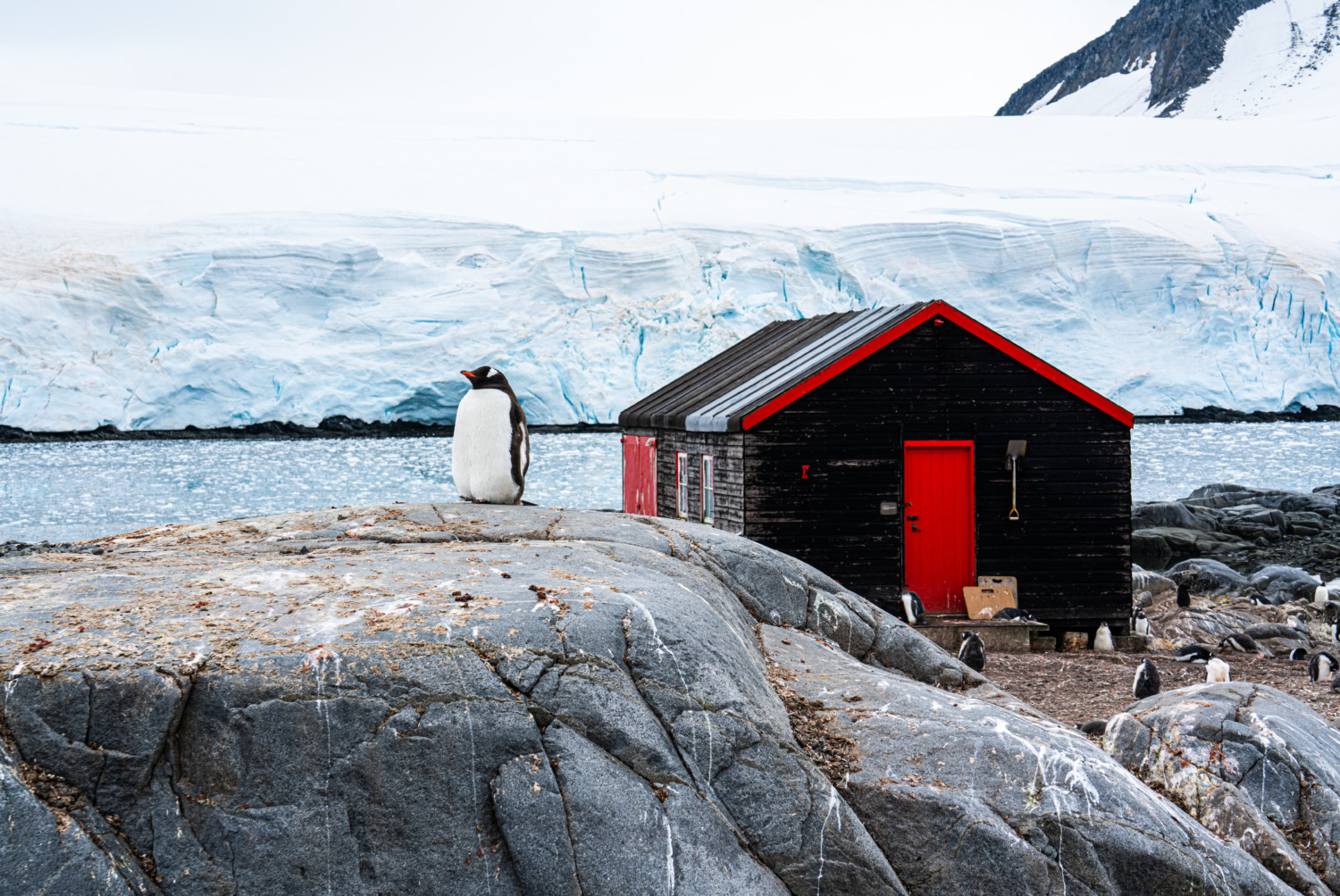
Tourist Attractions and Activities
Sightseeing opportunities and landmarks
When you visit Goudier Island, you will be greeted by breathtaking natural beauty and fascinating historical landmarks. Here are some of the must-see attractions on the island:
- Port Lockroy Museum: Take a trip back in time by visiting the Port Lockroy Museum, which was once a British military base during World War II. Explore the exhibits that showcase the island's rich history and learn about the research being conducted to study climate change and its impact on penguin populations and ice shelf stability.
- Jougla Point: Make sure to visit Jougla Point, a French research station that focuses on marine biology and oceanography. Marvel at the stunning views of the surrounding landscapes while learning about the effects of climate change on marine life, particularly the krill populations that serve as an essential food source for many Antarctic species.
- Wordie House: Discover the Wordie House, a historic research station named after the renowned polar explorer James Wordie. This field laboratory for glaciology research offers insights into the effects of climate change on Antarctica's ice sheets. Explore the researchers' work in studying ice cores and monitoring ice movements.
Popular activities for visitors
While exploring Goudier Island, there are plenty of activities to engage in and make the most out of your visit:
- Penguin Watching: Don't miss the opportunity to witness the charming penguins in their natural habitat. Join guided tours that allow you to observe these charismatic creatures up close while respecting their natural behaviours.
- Kayaking: Experience the pristine waters surrounding Goudier Island through kayaking. Paddle through icy channels, marvel at the stunning icebergs, and immerse yourself in the tranquillity of the Antarctic Peninsula.
- Hiking and Wildlife Spotting: Lace up your boots and explore the island's trails. Take in the stunning scenery, encounter diverse wildlife like seals and seabirds, and gain a deeper appreciation for the fragile ecosystem of Antarctica.
- Photography Opportunities: Capture unforgettable moments with your camera as you witness the awe-inspiring landscapes and wildlife. Whether you're a professional photographer or a hobbyist, Goudier Island offers endless photo opportunities.
By immersing yourself in the sights and activities of Goudier Island, you'll not only have a memorable adventure but also contribute to ongoing research efforts by supporting the research stations and their valuable work. So, get ready to embark on an extraordinary journey to Goudier Island!

Environmental Conservation on Goudier Island
Efforts to protect and preserve the island's ecosystem
When you visit Goudier Island, you are not only treated to stunning natural beauty and fascinating historical landmarks but also have the opportunity to witness the ongoing efforts to protect and preserve the island's unique ecosystem. Here are some of the conservation initiatives you can learn about:
- Port Lockroy Museum: The Port Lockroy Museum not only showcases the island's rich history but also serves as a platform to educate visitors about the importance of environmental conservation. Learn about the research being conducted to study climate change and its impact on penguin populations and ice shelf stability.
- Jougla Point: The French research station at Jougla Point focuses on marine biology and oceanography, emphasizing the importance of preserving the delicate Antarctic ecosystem. Discover the effects of climate change on marine life, particularly the krill populations that play a crucial role in the Antarctic food web.
- Wordie House: The Wordie House, named after James Wordie, offers insights into glaciology research and the effects of climate change on Antarctica's ice sheets. Explore the work of researchers studying ice cores and monitoring ice movements, contributing to the scientific understanding of climate change.
Impact of climate change and conservation measures
Goudier Island is not immune to the effects of climate change, and conservation measures are vital to protect the island's fragile ecosystem. By supporting these efforts, you can contribute to the preservation of this unique environment:
- Adopting sustainable practices: The research stations on Goudier Island strive to minimize their environmental impact through sustainable practices, such as waste management and energy conservation. By following their example, you can make a positive impact on the environment.
- Supporting research and educational initiatives: By visiting the museums and research stations, you are not only gaining knowledge but also supporting ongoing research and educational initiatives focused on understanding and mitigating the impacts of climate change.
- Promoting responsible tourism: As a visitor, it is important to respect the natural habitat of the wildlife on Goudier Island. Follow guidelines provided by tour operators and research stations to ensure your interactions with the environment have minimal impact.
By immersing yourself in the sights and activities of Goudier Island, you not only have a memorable adventure but also play an active role in the preservation of this remarkable environment. So, join us in embracing sustainable practices and supporting conservation measures on Goudier Island!
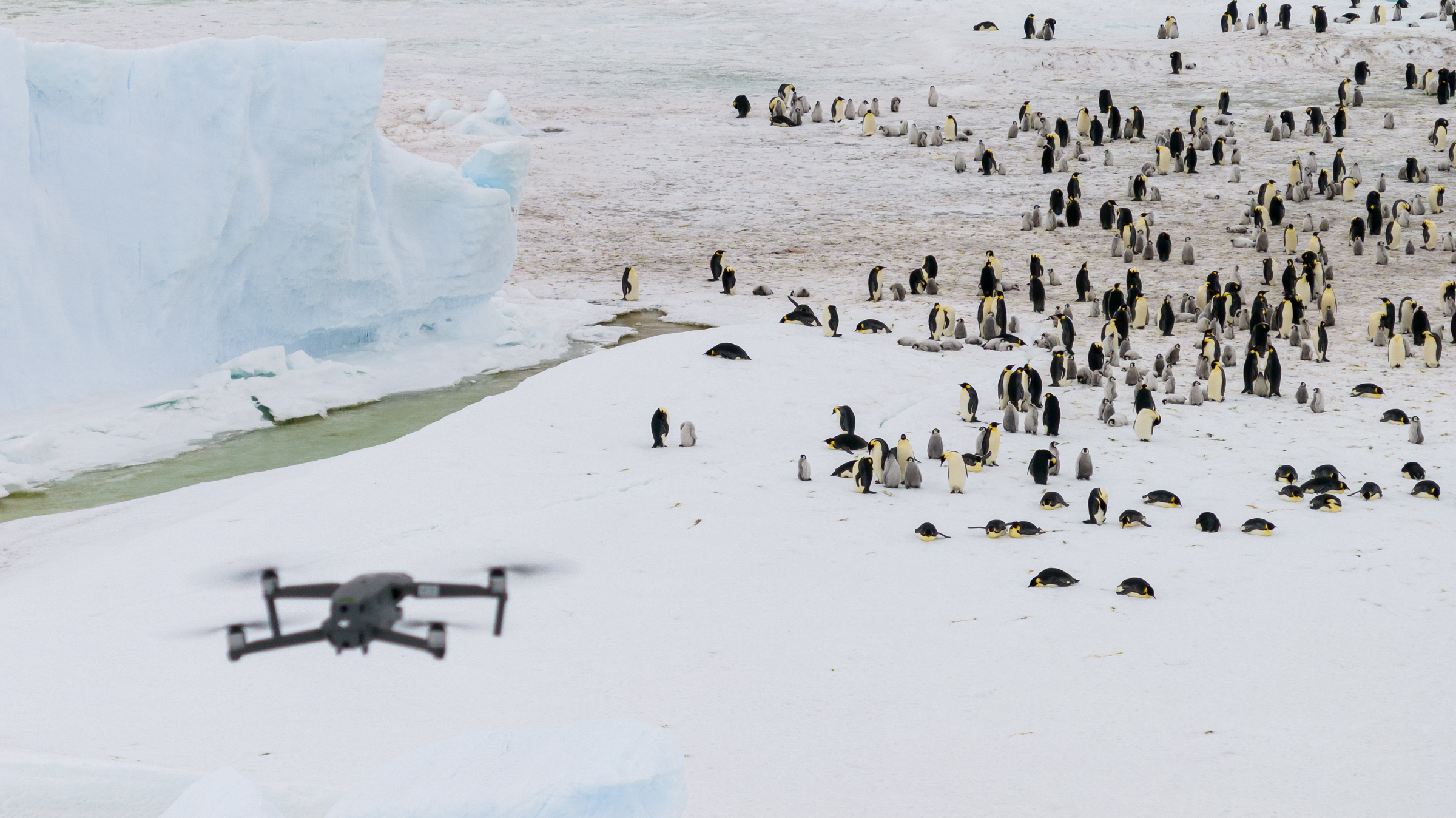
Getting to Goudier Island
Transportation options and accessibility
To reach Goudier Island, you can book a cruise that offers trips to the Antarctic region. Many tour operators include Goudier Island as part of their itinerary, allowing you to explore its natural wonders and conservation efforts. The journey to Goudier Island is an adventure in itself as you navigate through the icy waters and witness breathtaking landscapes along the way.
Travel tips and regulations
When planning your visit to Goudier Island, it is important to be aware of the travel tips and regulations put in place to protect the island's ecosystem. Here are some guidelines to follow:
- Observe wildlife from a distance: It is essential to respect the natural habitat of the wildlife on Goudier Island. Admire penguins, seals, and other creatures from a safe distance and avoid disturbing their nests or habitats.
- Familiarize yourself with waste management: The research stations on Goudier Island have implemented sustainable waste management practices. As a visitor, be mindful of your waste and follow the instructions provided by the research stations or tour operators.
- Dress appropriately: The weather in the Antarctic can be harsh and unpredictable. Dress in layers, wear waterproof clothing and bring sturdy footwear to stay comfortable during your visit.
- Follow the guidance of tour guides: Expert guides will accompany you throughout your visit to Goudier Island. Listen to their instructions and adhere to safety guidelines to ensure a safe and enjoyable experience.
By following these travel tips and regulations, you can contribute to the preservation of Goudier Island's delicate ecosystem and make a positive impact on the environment.
